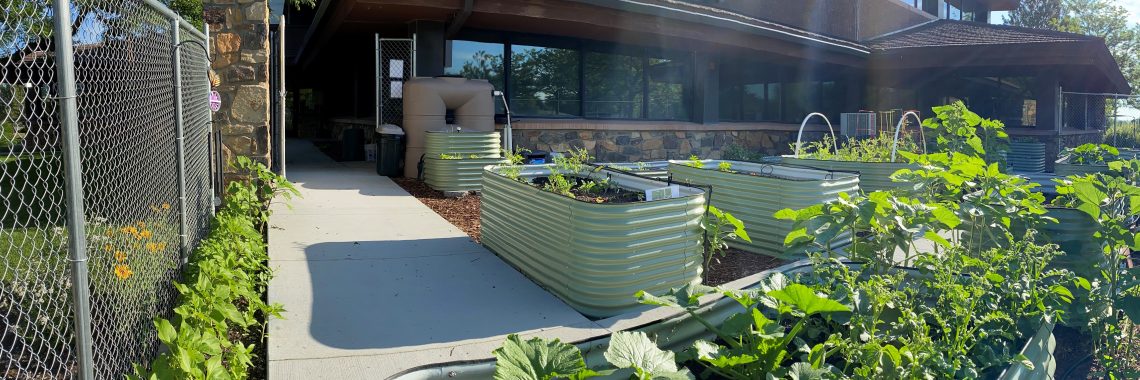Sometimes a great partnership starts with an idea and a single email—at least that’s how it went for Debbie Kelly, Bobbi Holder, and Karen Horner with the learning garden at the Park County Complex.
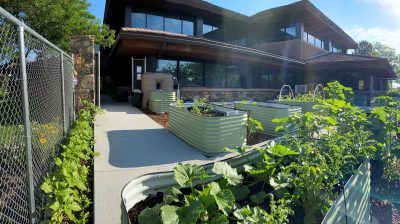
“I just happened to be watching the county commissioners’ meeting because I noticed on the agenda that Deb was going to be presenting about a garden thing,” says Horner, director of the Park County Library. “So I watched it, then literally right after that I just emailed them and said ‘Hi, I’m Karen and I want to help.’”
It all started when the University of Wyoming Extension office in Cody moved to the Park County Complex. Kelly, an educator for UW’s Extension Cent$ible Nutrition Program (CNP), and Holder, a UW Extension horticulturalist, saw opportunity in the sprawling grounds.
“The property around this building is amazing,” Kelly comments.
For the last several years, Kelly has worked with community gardens in the area and helped connect people with limited resources to locally grown food. Now, looking at the Park County Complex, she envisioned a garden space that would be open and welcoming for everyone in the community–and have an emphasis on learning. To make that happen, Kelly and Holder had to get the idea approved by the Park County commissioners, which is how Horner learned of the plan.
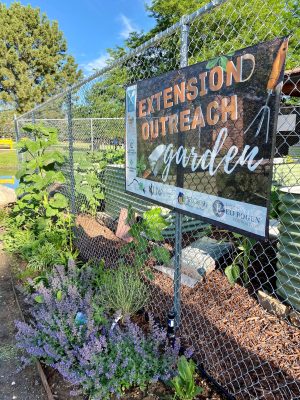
Once Kelly and Horner met, the ideas started flowing. “We were just bouncing ideas off of each other, which was super exciting,” says Kelly.
The initial garden idea had a blooming effect that grew to encompass accessible walkways in and out of the garden, sidewalk stencils to encourage physical activity, a story walk, benches, support for the seed library that was established in spring 2022, and a pollinator garden.
“If it wasn’t for Deb, Bobbi, and us [the library staff ], I don’t think we would have had the story walk and the kindness benches. That was huge. It transformed the whole entire complex,” Horner says.
It is a community garden, Kelly explained, but not in the way most are, where individuals have private garden beds. This is a community garden for learning and programming, designed for community activities where adults and children can learn together through the garden.
In her role as CNP educator, Kelly teaches nutrition and cooking to participants in the Park County Drug Court Supervised Treatment Program (STP). The garden provided a welcoming space for participants to try new foods and learn about growing food.
STP participants helped plant and harvest the garden beds, growing kabocha squash, cucumbers, green beans, zucchini, potatoes, lettuce, acorn squash, tomatoes, and herbs. They took home some of the harvest and the rest was donated to local anti-hunger agencies, like the local food pantry.
Nearly 200 pounds of produce from the garden beds was donated, Kelly reports.
The garden was also used by the Pardners Café inside the library, which provides vocational training for adults with disabilities.
“Pardners café has a little section of the garden used to grow things they use in the café,” says Horner.
The vegetable garden flourished in part because of the pollinator garden Holder established on the grounds in partnership with the Cody conservation district.
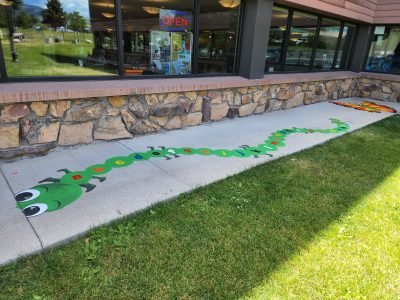
“That’s helped the library to connect with the conservation district and they’ve offered to do programs for us for our seed library,” Horner comments. “It’s a whole interconnected web of us helping each other.”
The conservation district wasn’t the only partner involved. Local contractors laid concrete for a sidewalk system to make the garden accessible and a local artist and volunteers helped Kelly paint physical activity games (like hopscotch) on the sidewalk. The library foundation paid for the sidewalk and fencing around the garden while other grants helped pay for the planters and soil.
“We got a lot of community support last summer for doing everything,” says Horner.
The changes to the grounds have been noticed, with regulars stopping to learn more about the projects.
“The sidewalks around here get used on a daily basis by the same people,” Kelly comments. “I don’t know how many people I had come up to me and want to know what kind of [garden] beds they were, and what we were growing and why.”
In the coming year, Kelly and Horner hope to see nature walks, story time, 4-H club garden efforts, seed library programming, and possibly cooking and art classes grow along with the garden.
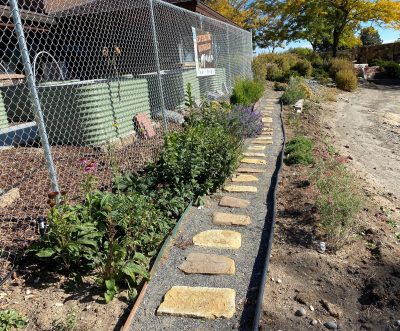
“I really do feel that it has added to the property up here. The space that we occupy was a hard space for building and grounds to take care of. It’s kind of on a side hill,” Kelly explains. “Now, with the garden space there, and the pollinator plants around the outside of it, it is beautiful.”
“Hopefully it doesn’t stop when I walk out those doors. That’s my biggest hope–that it keeps going,” she shares.
With so many ideas for the future, that seems likely. The garden is flourishing and appears poised to become the hub of community Kelly dreamed it would be.
“I think, for something like this, it really shows a sense of that community pride and ownership,” Horner notes. “It supports a quality of life and makes people proud of their community. It makes people want to be involved in their community.”
About the Cent$ible Nutrition Program
Wyoming’s Cent$ible Nutrition Program serves people with limited resources through nutrition education and local partnerships that help make the healthy choice the easy choice. CNP is funded by the USDA Supplemental Nutrition Program and the Expanded Food and Nutrition Education Program. CNP is available in every Wyoming county as well as the Wind River Indian Reservation, and offers both in-person and online classes. Programming is free to those who income qualify. For more information, visit uwyocnp.org.



